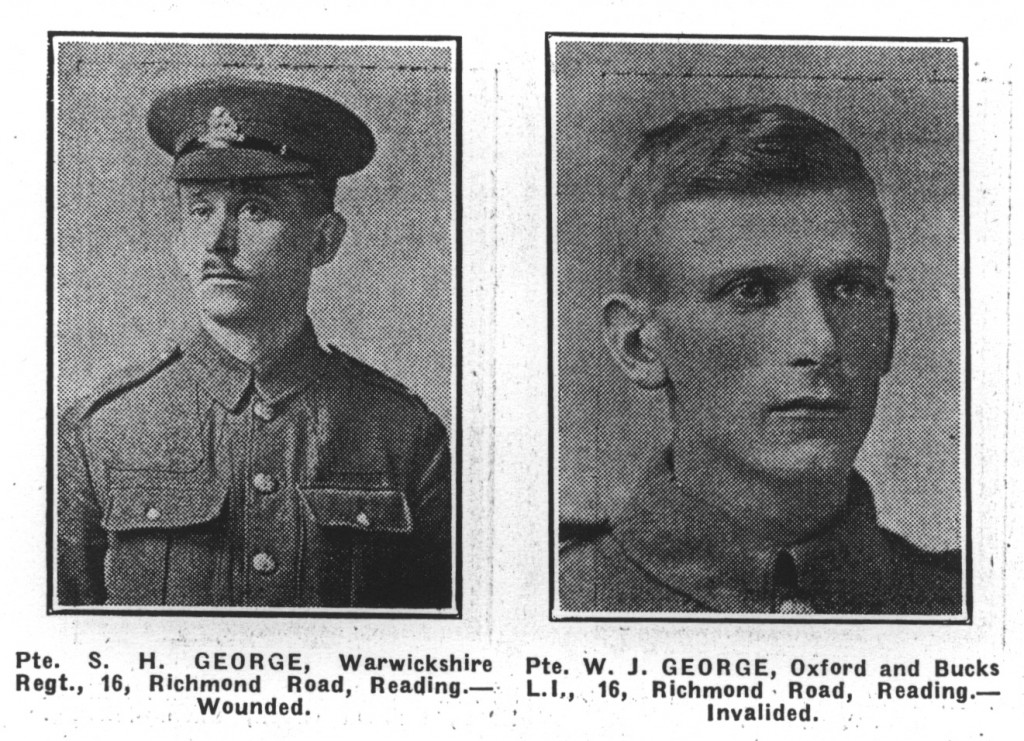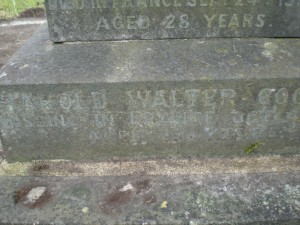Sidney Henry George
Private 28566
11th Battalion Royal Warwickshire Regiment
Division 29
 |
Sidney Henry George was the son of William John and Annie George, of 16, Richmond Road, Reading; and husband of Louisa George, of 19, Richmond Road, Reading, Berkshire. He was killed in action on 24th September 1917. He is commemorated upon the kerb stones of his parents grave in Reading Cemetery. Grave number 17590. The Berkshire Family History Society classification is 29G25.
Sidney George has no known grave and is commemorated on the Tyne Cot memorial, Panel 23 to 28 and 163A.
The battle, of what was subsequently known as the Menin Road Ridge, began on September 20th. The British threw themselves at the German strong point known as “Tower Hamlets”. The Australians fought for Glencorse Wood and and Nonne Bosschen, the South Africans took the Breman Redoubt. There was fierce fighting all along the front, particularly in front of Langemarck. During the following days the Australians fought for Polygon Wood which was the key to the ridge and Passchendaele. It was during this fighting that Sidney George lost his life. Greater detail of the battle can be found in ‘Passchendaele’ by Martin Matrix Evans.
Sidney was wounded in the neck by shrapnel on April 28th 1917 but recovered sufficiently to be sent back to the front. His brother W.J.George was invalided out of the army with trench feet. (Reading Standard 12th May 1917)
![350px-HMS_E20[1]](http://cemeteryjunctionwargraves.org.uk/wp-content/uploads/2013/12/350px-HMS_E201.jpg)




